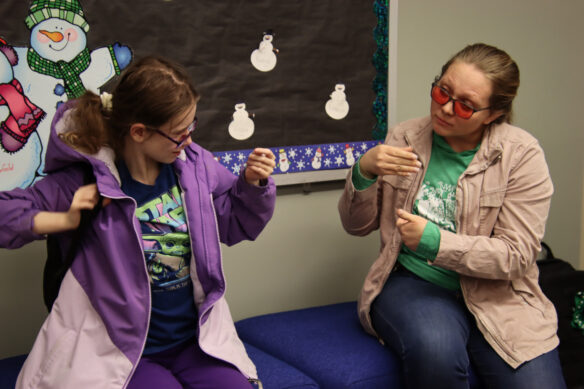
Educators with the Kentucky School for the Deaf are specially trained to accommodate the educational needs of the Deaf and Hard of Hearing.
Photo by Joe Ragusa, March 8, 2023
Byron Wilson has been around the Kentucky School for the Deaf (KSD) in some capacity for 38 years.
“KSD has helped make me the person I am today,” he said.
Wilson has been a teacher for 25 years at the school, which is commemorating its bicentennial this year. He also was at the school for 13 years as a student, meaning he’s seen quite a bit of KSD’s history.
“I attended college and decided to come back and teach because this is my home and I want to give back,” he said.
Founded on April 10, 1823, KSD was the first state-supported school of its kind in U.S. history. It was only the fourth school specifically for deaf children in the country’s history as well.
General Elias Barbee, a Kentucky state senator whose daughter was deaf, worked with Judge John Rowan to establish the school. John Jacobs, the school’s first teacher, helped build the school up with its first superintendent, Rev. John Rice Kerr. The oldest surviving building on campus is named after Jacobs.
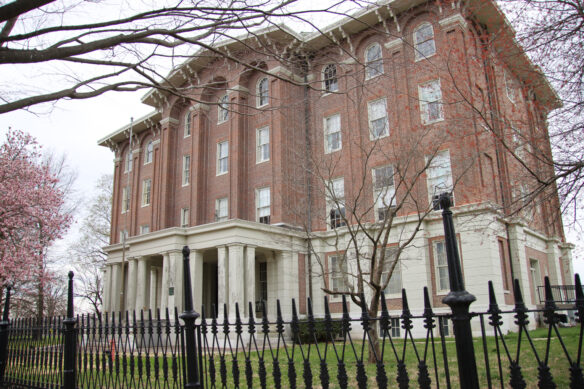
Jacobs Hall, named after the school’s first teacher, John Jacobs, is the oldest building on campus. It was built in 1857 and has been designated as a national historic landmark by the U.S. Department of Interior.
Photo by Joe Ragusa, March 8, 2023
Obviously, Wilson wasn’t around for that, but he still appreciates what the school has meant for students over the past two centuries.
“So many schools have not lasted this long. Some have closed within 25 years, some within 50 years,” he said. “We’re seeing so many schools for the deaf close, but the fact that we’ve existed for 200 years, it’s wonderful that we’ve lasted this long.”
Wilson – like many of KSD’s students – lived on campus while attending the school. The campus in Danville services families across the Commonwealth that have children who are deaf or hard of hearing, meaning some students could have families that are hundreds of miles away.
“I spent actually more time here than I did with my own parents at my own home through those 13 years, if you add it up,” said Wilson. “But I just feel such a connection to KSD. I’m happy here.”
Wilson’s parents were educators, so he said he always felt a tie to the field of teaching. He also was drawn to teaching at the elementary school because of how important communication can be at such a young age.
“American Sign Language … helps them with their social language and their academic language while they’re young. I want to instill that while they’re young,” said Wilson, a 3rd-grade teacher. “I feel like the fact that they’re deaf and I’m deaf, we’re on the same page. I can understand them well, they can understand me well, and we have that connection, that bond.”
Wilson isn’t the only KSD teacher who grew up at the school. Todd Batsche was a student for 13 years and came back to work, first as a teacher’s aide, then in the dormitory program before he began teaching high school English and reading.
He said weaving the students’ knowledge of American Sign Language into the English language is crucial for helping them understand the world better.
“Because American Sign Language is their first language and English is their second language, I want to be supportive of them and teach them to become better in both languages, to understand, to be able to express themselves,” said Batsche. “The English language is really complex, but I want them to be able to learn to write in English when they need to.”
And he credits his time at KSD for helping him develop his love of education.
“There were awesome people that work here at KSD,” said Batsche. “All the things that I learned from those individuals, I have carried with me all my life. I feel that it’s critical that I share that same feeling and experience with other children.”
“I’m not the only deaf student as long as I’m here.”
The Kentucky School for the Deaf offers students an education tailored to their specific needs.
Shonda Barker, a junior at KSD, went through public school until this year and the difference has been monumental.
“At my public school, I felt really isolated and I would get depressed,” she said. “But once I got to KSD, it really changed my life. It made it better. I’m not the only deaf student as long as I’m here.”
And because of KSD, she said now she feels comfortable pursuing a career in nursing.
“My dream has always to be a nurse, and I love doing things like drawing blood and nursing concepts,” said Barker. “I like helping people, helping others.”
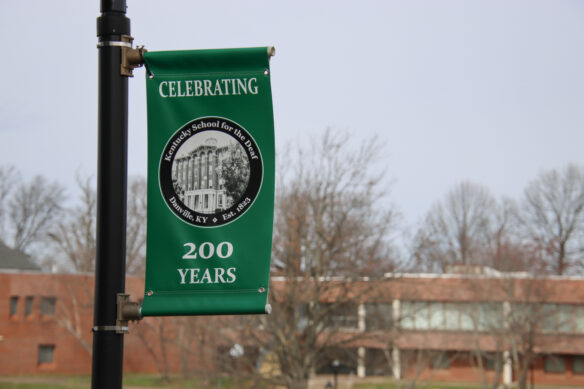
The Kentucky School for the Deaf has held several events to commemorate the school’s bicentennial this year.
Photo by Joe Ragusa, March 8, 2023
Another junior at KSD, Cochise Zoronza, has spent a few years at the school in-between stints at traditional public schools. He said being immersed in a community of students that communicates the same way he does has been his favorite part of the experience at KSD.
“I found that being at KSD gave me a greater sense of who I am because I can be with other people that understand me and are like me,” said Zoronza.
And even among the students, the history of KSD isn’t lost on them as they move ahead in life.
“We want this school to be here for future generations of deaf children,” said Zoronza. “And we want to be able to look back on all of our successes and the other accomplishments deaf people have made through the years.”
Wilson decided to come back for that exact reason: making sure the school is still around for future generations. He encourages any hard-of-hearing student to consider the Kentucky School for the Deaf because every opportunity will be available to them.
“If they attend here, they get full access to everything. One hundred percent access with their peers, with their teachers, with the staff. Everyone can communicate with them,” said Wilson. “Plus, we have after-school programs, we have clubs, we have sports programs. We go on trips, field trips, so they would have access to everything.”
Education Commissioner Jason E. Glass said he’s proud of the school’s history and what it means for the Commonwealth’s Deaf and Hard of Hearing communities.
“For 200 years, the Kentucky School for the Deaf has been a model for how to address the educational needs for the Deaf and Hard of Hearing,” said Glass. “The school has stood the test of time and I’m excited to see how KSD continues to evolve to address the challenges of our wonderful students.”

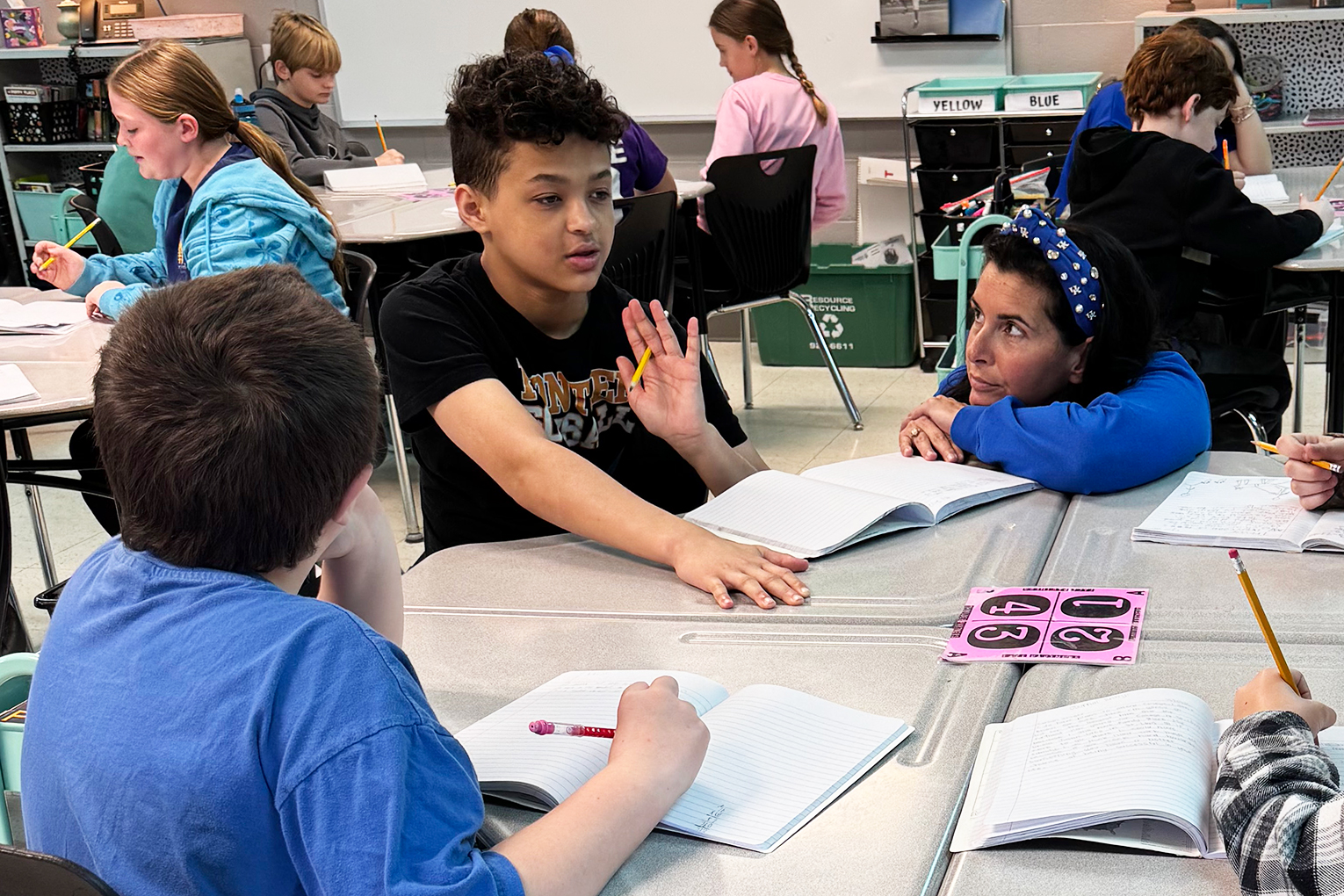
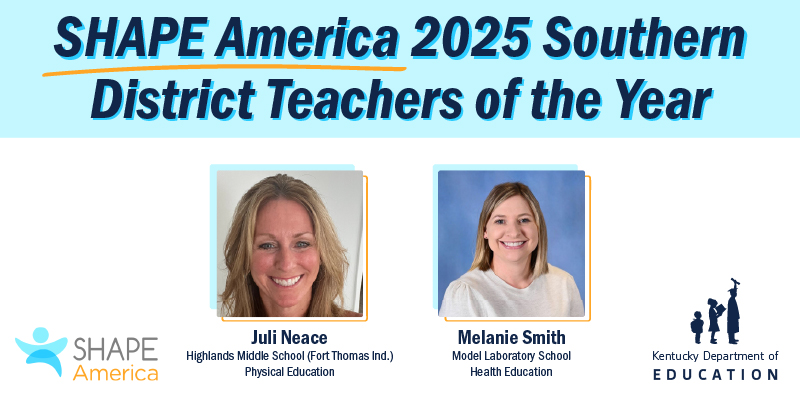

Leave A Comment